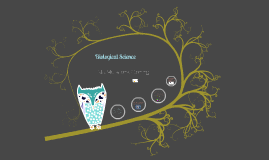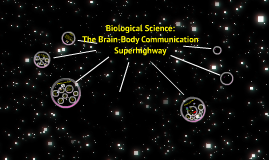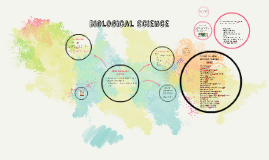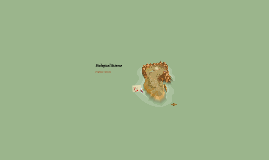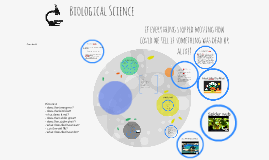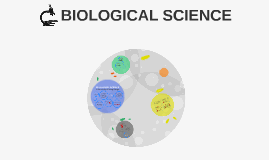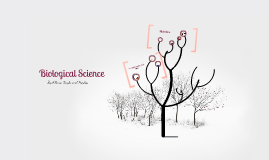Biological Science
Transcript: What does it cost Americans in Dollars? We use 100 percent of our brain. Three forms of evidence for concluding that the mind is the brain in action 1. Brain activity changes with different behaviors and perceptions 2. Brain damage causes deficits in behavior and perception 3. Stimulation of the brain activates behavior and/or perceptions If you learn something new and do it only once or twice, the dendrite connection is very fragile and can disappear within hours. Within 20 minutes, you remember only 60%. Within 24 hours, you remember only 30%. But if you practice within 24 hours, and then practice again later, you remember 80%. The World Health Organization has reported that 4 of the 10 leading causes of disability in the US and other developed countries are mental disorders. By 2020, Major Depressive illness will be the leading cause of disability in the world for women and children. Five Leading Causes of Deaths Among Persons Ages 15–19 Years, United States, 2010 (CDC 2010) Biological Psychology With enough practice, the dendrites build a double connection. Faster, stronger, double connections last a very long time. You remember what you learned! You must do something active to learn, because… The Autonomic Nervous System The Brain and Emotion: Limbic Circuits Make he Most of Practice Time… The Forebrain (forward-most) Leading Causes of Death... Dendrites grow ONLY when you are actively doing something. No one else can grow dendrites for you! Regions of the Brain Learning is Biological and Natural! What is Depression: What Causes Depression? The Forebrain Short-Term Memory is VERY Short! The More You the Faster the Connections Dendrites Take Time to Grow Learning... The Endocrine System: Hormonal Regulation The Forebrain The Forebrain You grow dendrites for exactly the same thing you are practicing. If you listen or watch psychology issues and concerns are being discussed, you grow dendrites for listening or for watching. If you actually address and solve the concerns yourself, you grow dendrites for solving. Basal Ganglia Control of voluntary movement (with help of motor cortex) Reward-related movement The Use of Drugs and Alcohol can impact the Basal Ganglia… Topic 6 The More You Practice the Stonger the Conncetions Mapping Our Brains Five Leading Causes of Deaths Among Persons Ages 20–24 Years, United States, 2010 Dendrites Cannot Grow in a Void. Thalamus Sensory gateway to the cerebral cortex. Its function includes relaying sensation, special sense and motor signals to the cerebral cortex, along with the regulation of consciousness, sleep and alertness Hypothalamus maintains internal bodily states by overseeing the endocrine and autonomic nervous systems (e.g., releases hormones to influence hunger, sexual motivation) Special chemicals called neurotransmitters carry the electrical signals across the synapse. When you practice something, it gets easier for the signals to cross the synapse. That’s because the contact area becomes wider and more neuro- transmitters are stored there. The Brain and Emotion: Limbic Circuits Biological Psychology is the study of the brain and behavior Our brains contains approximately 100 billion neurons (nerve cells), *and maybe even billions more! Topic 7 Practicing Builds Double Connections. When you practice something, the dendrites grow thicker with a fatty coating of myelin. The thicker the dendrites, the faster the signals travel. The myelin coating also reduces interference. Occipital Lobe - vision Visual cortex Sensory Cortical Hierarchies Association Cortex (e.g., conscious perception of visual scene Sensory cortex (e.g., visual ctx) Sensory info (e.g., light) Pituitary gland "The Master Gland” Controls other bodily glands and is under control of the hypothalamus Adrenal glands release adrenaline and cortisol during physical and psychological stress activated by the sympathetic nervous system Sexual reproductive glands Testes produce testosterone Ovaries produce estrogen However, both sexes release some sex hormone associated with the opposite sex Amygdala Excitement, arousal, fear, social signals related to emotion, etc. Cingulate Cortex Active during emotional expression knowledge of socially appropriate behavior regulates autonomic nervous system Hippocampus spatial memory, fear conditioning, navigation, Injury: problem forming new memories It takes a lot of practice for dendrites to grow. This is why you do homework. This is why cramming doesn’t work. Making mistakes, and getting feedback allows you to check the accuracy of the connections in your brain. Be sure to get feedback quickly so you don’t practice the wrong thing and build a strong, but wrong, connection! Parietal Lobe perception of space, object shape and orientation, actions of others, numbers Integrates vision, touch, motor information Somatosensory cortex pressure, temperature, pain Brain cells are called neurons. You are born with at least 100 billion neurons. Dendrites (fibers) grow out of the






